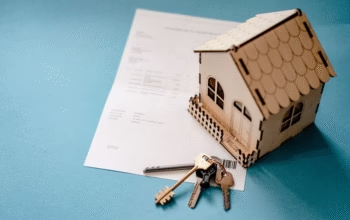The Hidden Costs of Refinancing: What Lenders Don’t Tell You
Refinancing a mortgage often feels like a smart move—lower interest rates, reduced monthly payments, or freeing up cash for other needs. With headlines touting the potential savings, many homeowners rush to refinance without fully understanding the true cost of the process. What lenders often don’t emphasize are the hidden fees and long-term financial impacts that can catch you off guard, turning what looks like a great deal into a costly mistake.
In this blog, we’ll peel back the curtain on the lesser-known costs of refinancing and share tips to help you make a smarter, more informed decision.
Why Refinancing Is So Popular
Before we explore the hidden costs, it’s helpful to understand why refinancing has become such a common financial strategy.
- Lower Interest Rates: Homeowners refinance to lock in a lower rate, reducing monthly payments.
- Cash-Out Refinancing: Borrowers tap into their home equity for renovations, debt consolidation, or other expenses.
- Shorten Loan Terms: Switching from a 30-year to a 15-year mortgage can save interest over time.
- Change Loan Type: For example, moving from an adjustable-rate mortgage (ARM) to a fixed-rate mortgage for stability.
While these benefits sound appealing, the reality is that refinancing is not free — and these “hidden” costs can sometimes outweigh the advantages.
The Most Common Hidden Costs of Refinancing
1. Closing Costs and Fees
Refinancing requires a new loan application, which means most of the original mortgage closing costs apply again. These fees often total 2% to 5% of your loan amount and may include:
- Application fees
- Loan origination fees
- Appraisal fees
- Title insurance and title search fees
- Credit report fees
- Attorney fees (in some states)
- Recording fees
- Prepayment penalties from your original mortgage
While some lenders offer “no closing cost” refinancing options, these usually come with trade-offs, like higher interest rates or fees rolled into the loan balance, increasing the amount you owe over time.
What lenders don’t always tell you: The closing costs are upfront and can sometimes be more than $5,000, depending on your loan size. Rolling them into the loan might seem convenient but could negate your monthly savings.
2. Prepayment Penalties
Not all mortgages allow you to pay off your loan early without penalty. Some lenders include prepayment penalties—fees charged if you refinance or pay off your loan within a certain period, typically the first 2-5 years.
- These penalties can be a percentage of your loan balance or several months’ worth of interest.
- They can easily cost thousands of dollars.
What lenders don’t advertise: Prepayment penalties are often buried in the fine print. Missing these could turn your refinance savings into a net loss.
3. Extending Your Loan Term
Many homeowners focus on the monthly savings from refinancing but forget that refinancing often resets your loan term back to 15 or 30 years. This extension means:
- You pay more interest over the life of the loan, even if your monthly payments are lower.
- If you refinance early in your loan, you could end up paying decades more in interest.
For example, if you are 10 years into a 30-year mortgage and refinance to a new 30-year loan, you add 10 extra years of payments, increasing your total interest cost.
What lenders don’t emphasize: Monthly payment savings don’t tell the whole story—always calculate your total interest cost over time.
4. Higher Interest Rates for “No Cost” Refinances
“No cost” or “no closing cost” refinancing is a popular marketing tactic. But “no cost” doesn’t mean “free.” Instead:
- The lender increases your interest rate slightly.
- They roll closing costs into the loan principal.
- Over time, you pay more interest because of the higher rate or bigger loan balance.
What lenders don’t highlight: This approach spreads costs over time, making it harder to see the true expense of refinancing.
5. Private Mortgage Insurance (PMI) Surprises
If your home’s value has dropped or your equity is less than 20%, refinancing might require private mortgage insurance (PMI). PMI protects the lender if you default, but it’s an extra cost to you:
- Typically 0.5% to 1% of the loan amount annually.
- Adds hundreds of dollars to your monthly payment.
- Some borrowers are surprised to learn PMI is added when refinancing, even if they didn’t pay it on the original mortgage.
What lenders don’t clearly say: PMI can wipe out any monthly savings you expected, so ask about PMI upfront.
6. Appraisal Costs and Home Value Risks
Refinancing requires a new appraisal. But if the appraisal comes in lower than expected:
- You might not qualify for the loan amount you hoped for.
- You may have to bring cash to closing to cover the difference.
- In worst cases, your refinance could be denied.
Even if you planned to cash out some equity, a lower appraisal can eliminate that option.
What lenders don’t warn about: The appraisal could reveal less equity than anticipated, reducing your refinancing benefits or making refinancing impossible.
7. Potential Tax Implications
Refinancing can have tax consequences you might not anticipate:
- If you refinance to take cash out, the money is usually not tax-deductible.
- Deductibility of mortgage interest can change if the loan amount increases significantly.
- You may lose other mortgage-related tax benefits from your original loan.
What lenders don’t discuss: Consulting a tax professional before refinancing can save you surprises at tax time.
How to Avoid Getting Caught by Hidden Costs
Refinancing isn’t inherently bad — it can be a powerful financial tool if done wisely. To protect yourself from hidden costs, consider these tips:
1. Calculate the Break-Even Point
Before refinancing, calculate your break-even point — how long it will take to recoup closing costs through monthly savings.
- If you plan to move before the break-even point, refinancing probably isn’t worth it.
- Use online refinance calculators or ask your lender for detailed amortization schedules.
2. Ask for a Loan Estimate and Closing Disclosure
The Loan Estimate provides upfront details on expected costs and fees. The Closing Disclosure gives the final costs before closing.
- Review both documents carefully.
- Ask lenders to explain any fees or charges you don’t understand.
3. Shop Around and Compare Offers
Don’t settle for the first lender:
- Compare interest rates, fees, and closing costs from multiple lenders.
- Negotiate fees when possible.
- Ask about prepayment penalties and PMI requirements explicitly.
4. Consider Your Loan Term Carefully
If your goal is to save interest long-term, consider refinancing to a shorter loan term rather than resetting to 30 years.
- Shorter terms often have lower interest rates.
- Your monthly payments might be higher but can save thousands in interest.
5. Beware of “No Closing Cost” Deals
Understand how the lender is covering those costs:
- Is it a higher interest rate?
- Are fees added to your loan balance?
- Calculate the total cost over the loan’s life, not just upfront fees.
6. Get a Professional Home Appraisal
If your home’s value is uncertain or market conditions are volatile, consider ordering an appraisal independently before refinancing.
- This helps avoid surprises with low appraisals.
- You can shop for a lender after you know your home’s true value.
7. Consult a Financial Advisor or Tax Professional
They can help you:
- Assess if refinancing fits your overall financial goals.
- Understand tax implications.
- Plan for how refinancing impacts your long-term wealth.
Final Thoughts: Refinancing Isn’t Always a Free Lunch
Lenders often promote refinancing as a straightforward way to save money or access cash. While it can be a smart move, the hidden costs—from closing fees and prepayment penalties to longer loan terms and PMI—can erode or even eliminate your financial benefits.
The key is awareness. Educate yourself on these less obvious expenses, ask questions, and don’t be rushed into a decision based solely on lower monthly payments or flashy “no cost” offers.
Refinancing can be a powerful financial tool—but only when you understand the full picture, including what lenders don’t always tell you.
If you’re thinking about refinancing, take the time to run the numbers, read the fine print, and get advice from trusted professionals. That way, you can avoid surprises and make your home loan work for you—not against you.



